Comparing Your Hospital
To compare your hospital’s crime rate to the statistics above, the following formula can be used to calculate the rate per 100 beds:
Crime Rate = (x / Beds) * 100
where x is the total crime for each crime type and
Beds is the number of beds at your hospital
Example: (17 assaults / 360 beds) = 0.047 * 100 = 4.7 assaults per bed
Workplace Violence Typology
To drill down further into the assault numbers, we asked if hospitals maintain statistics using the Workplace Violence Typology. This classifies both aggravated assaults and simple assaults into four types.
- Workplace Violence Type 1: Violent acts by criminals, who have no other connection with the workplace, but enter to commit robbery or another crime
- Workplace Violence Type 2: Violence directed at employees by customers, clients, patients, students, inmates or any others for whom an organization provides services
- Workplace Violence Type 3: Violence against coworkers, supervisors or managers by a present or former employee
- Workplace Violence Type 4: Violence committed in the workplace by someone who does not work there but has a personal relationship with an employee, e.g., an abusive spouse or domestic partner
- Many respondents (n = 104) provided aggravated assault and assault data by workplace violence type. As found in prior Healthcare Crime Surveys,
Of 215 responses, 77 percent said their hospitals record assault statistics according to the typology.
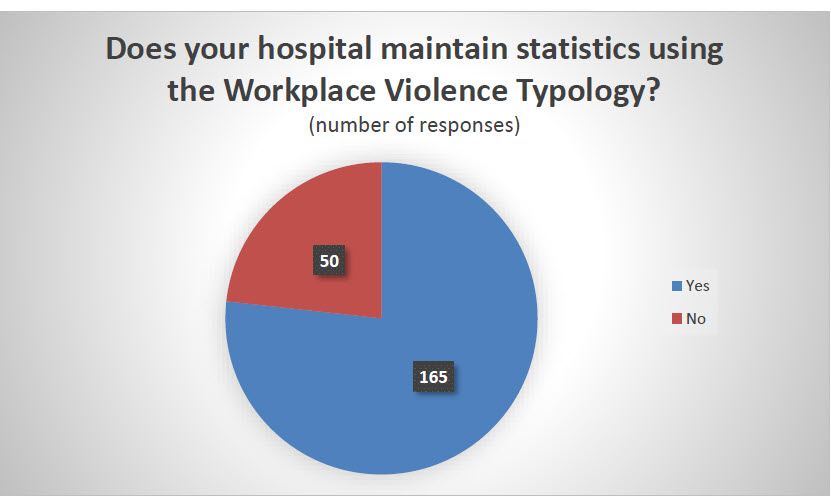
Among those reporting assaults by category, type 2 (violence directed at employees by non-employees) attacks were, by far, the most common, accounting for more than four out of every five aggravated assaults and simple assaults.
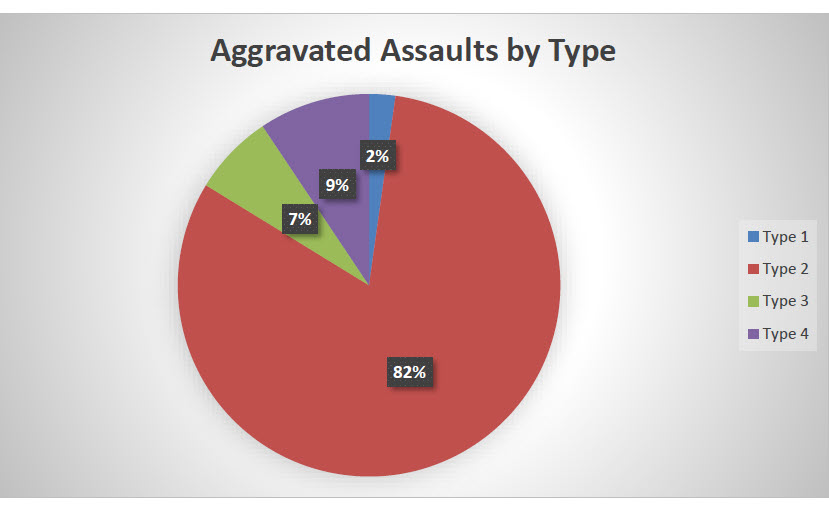
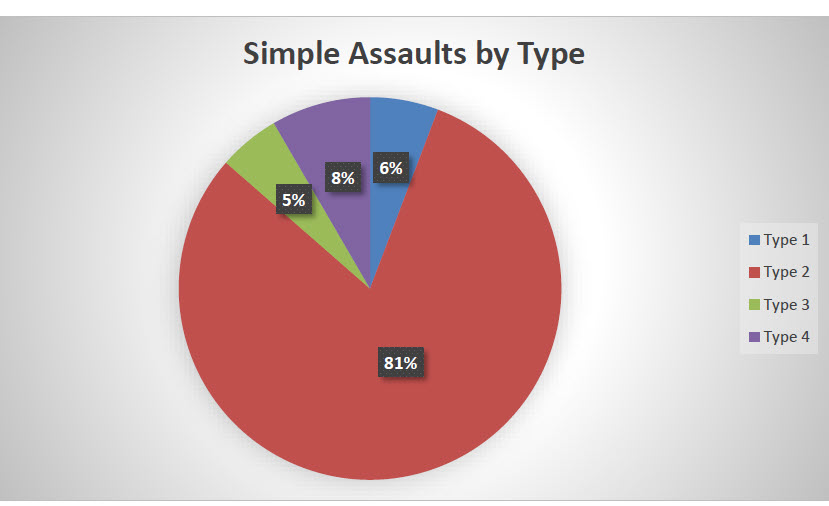
ADDITIONAL QUESTIONS
In addition to inquiring about crime data, we asked respondents a few questions regarding specific aspects of their security operations.
Threat Management Teams
This year, for the first time, we asked respondents if their hospital uses threat management teams in its security operations.
Although the term was not defined in the survey, a threat management team, generally speaking, is a tool aimed at reducing workplace violence by bring together individuals from various departments within an organization to assess threats, develop countermeasures, and intervene before violence occurs. Of the 269 total respondents, 261 provided an answer to this question, with 70 percent saying they do use threat management teams.
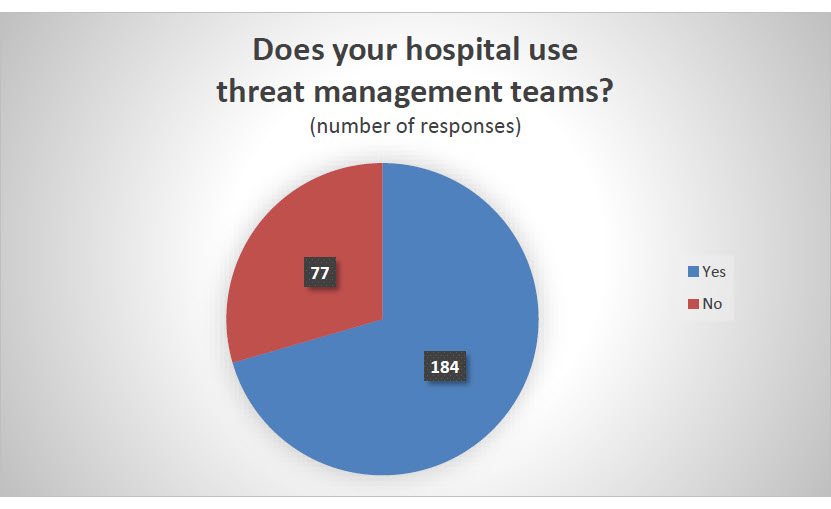
In addition to inquiring about crime data, we asked respondents a few questions regarding specific aspects of their security operations.
Visitor Management Programs
We also asked if hospitals used visitor management programs to track entry and exit to their facilities by people other than staff and patients. Of 227 responses, 73 percent said yes.
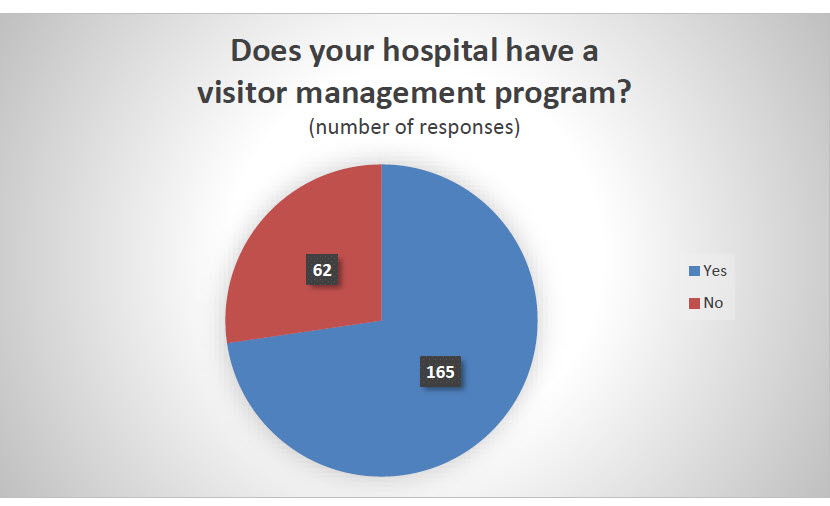
Visitor management is a security measure that saw increased use during the pandemic, and it may be lasting in many places. See the next section on Covid-19.
Covid-19
Hospitals have obviously faced unprecedented challenges during the Covid-19 pandemic, with patient surges increasing demands on clinical staff and measures such as visitation restrictions and mask requirements altering security operations.
We asked how current security department staffing and budgets compared to pre-pandemic levels. Although some changes were reported – in both directions – among 171 responses to the staffing questions, 65 percent reported no significant change, while out of 176 responses to the budget question, 64 percent reported no significant change.
With so many security procedures being altered during the pandemic, we asked what new measures were likely to remain when “normal” operations resume. Of 164 responses, 45 percent cited either visitor management or access control procedures, while a handful referenced continued use of personal protective equipment (PPE) or health screening measures, and 19 percent said no pandemic measures would continue.
